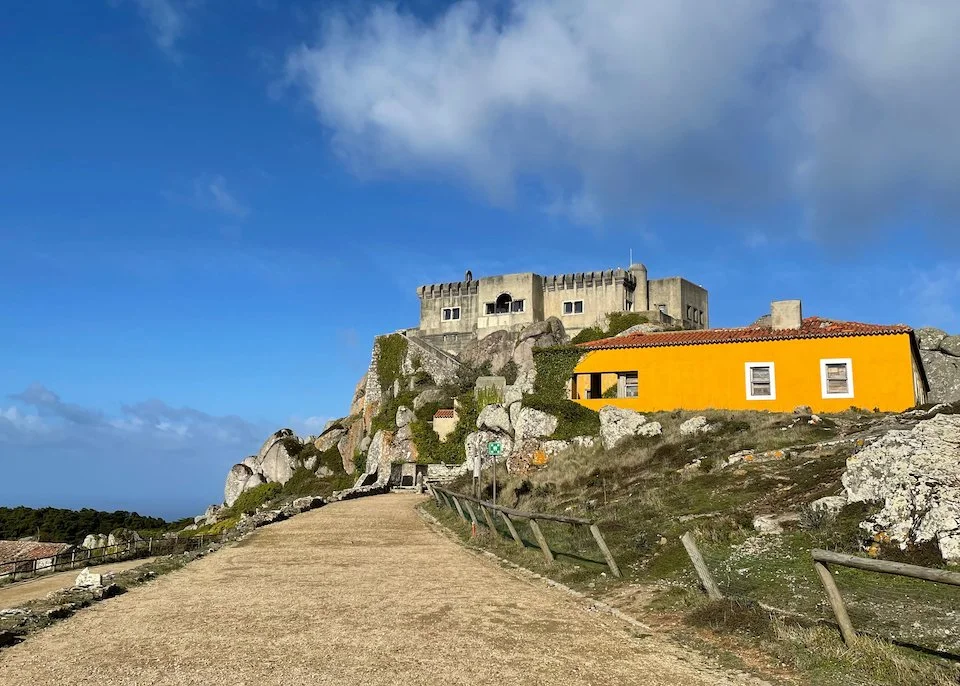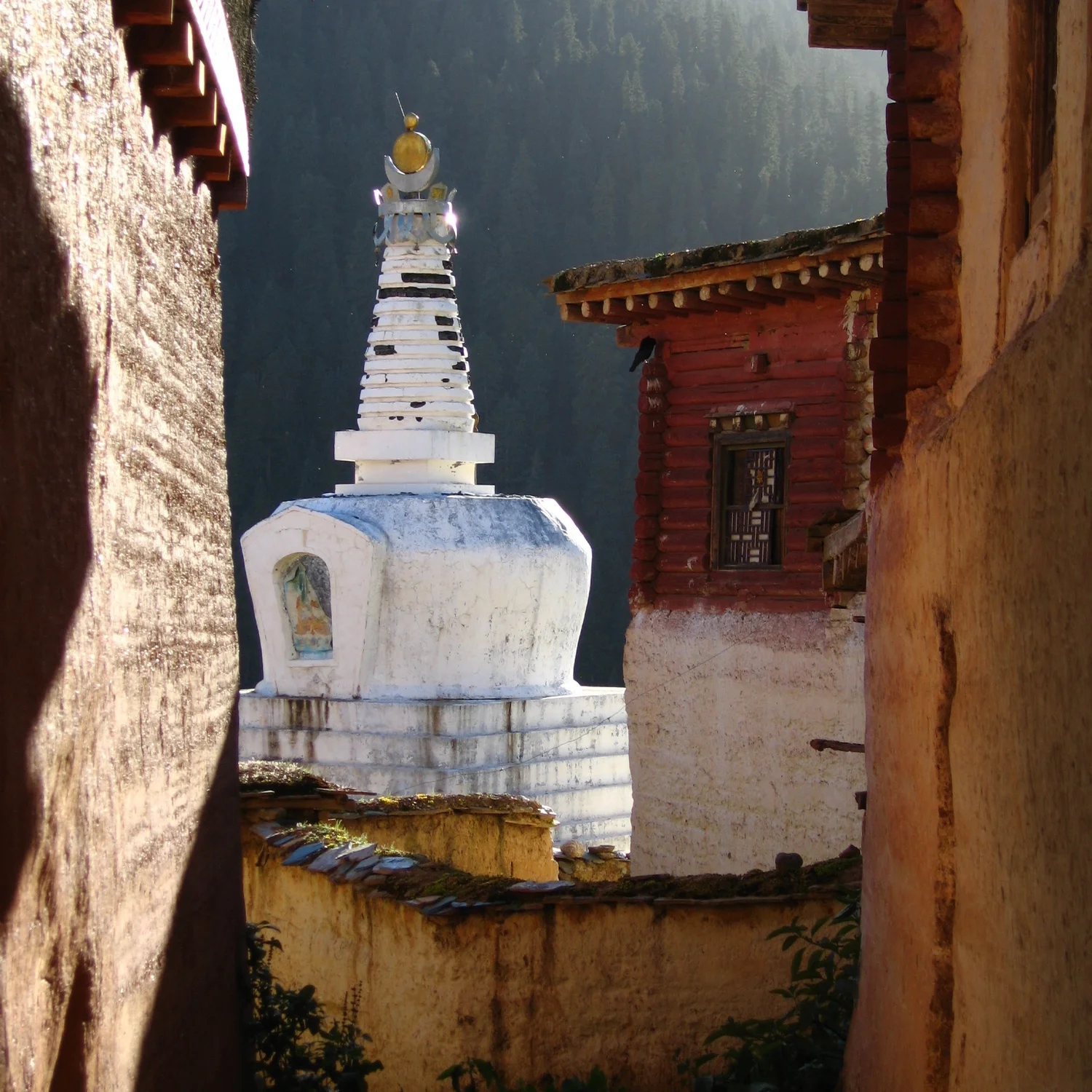When a fear of heights threatens to derail Elyn Aviva from reaching the Sanctuary of Nossa Senhora da Peninha, a place of miracles situated atop a rocky coastal outcrop in Portugal, a stranger appears to help, again and again, at precisely the moments assistance is needed most.
All tagged Sacred Places
Demystifying Malta
Elyn Aviva traveled to Malta to experience sunrise at the 5,500-year-old Mnajdra Temple on the day of spring equinox. Unexpected insights are revealed when the event wasn’t the sacred experience she’d anticipated.
The Trek to Little Potala Palace
by Chris Pady
While visiting the town of Derge (rhymes with reggae) in eastern Tibet, my partner, Michele, and I learn of Palpung, the area’s largest and most important Kagyupa (White) sect monastery, locally known as the “Little Potala Palace”.
Yet despite Palpung’s reputation, we have no luck hiring a guide through any of the town’s hotel staff, shopkeepers, or restaurant owners. Finally, we bump into an English-speaking monk who promises to arrange everything for us. “Meet here at 7 o’clock tomorrow morning”, he instructs, pointing to a designated spot. Nothing about the arrangement spells certainty, yet we’ve got nothing to lose.
My husband, Gary, and I recently went to Cornwall to walk meandering paths with a small group. At least, thatwas the story. One morning over breakfast at Rosemerryn House in Lamorna Valley, one of our group revealed she is a professional storyteller. She described learning to take storytelling seriously. “After all,” she mused, “We don’t usually think stories are important. At least, not in the real world.”
I realized that often the word “story” is used as a code word for “false.” As in: “Oh, that’s a likely story! You don’t really expect me to believe you, do you?” Or it’s trivialized to mean something soothing, as in, “Tell me a bedtime story.” Of course, a story is much more than that: it is how we make meaning out of our experiences—as in, “telling the story of my life.” Sometimes I identify so much with my story that instead of me telling “it,” it starts telling “me.”
Pendeen Fogou wasn’t a very prepossessing site. To reach it, the three of us—my husband, Gary, our guide, Cheryl Straffon, and I—had to unfasten three rusty metal gates to venture ever deeper into a farmer’s cattle yard. The broken concrete beneath our feet was covered with several layers of dried (or drying) cow manure. Cattle were lowing and resting in their own muck in the nearby pens.
Our goal was a six-foot-tall stone structure with tall grasses and weeds growing out of the top and a yawning opening in one wall. Before we could enter the site, we had one more obstruction: a detached farm gate, which the three of us hauled over to one side.
Bending low, we followed Cheryl down a steep, stone-lined passage deep into the earth. I was grateful I had my hiking staffs to help keep me from slipping. At the bottom, the rocky passage leveled out. My flashlight illuminated moss-covered granite walls and ceiling, the large stones carefully placed to construct the fogou. Pronounced “foo-goo,” it’s a Cornish word that means “cave,” and it refers to a human-made underground cavern.
My Journey to the Union of Heaven and Earth
by Elyn Aviva
Join me on a journey into the unknown, where what you think you know melts away and is replaced by something bigger.
Genuine or Hoax? Visiting a Crop Circle Formation at Avebury, England
by Elyn Aviva
The news rippled through our group like a breeze through a wheat field: a crop circle had just been spotted! According to a crop circle blog, it had appeared only two days earlier, on the side of Windmill Hill, close to Avebury, in southern England. We were told it was still fresh and relatively untrammeled. Even better news was that we were nearby, since our group was visiting sacred sites in the area—including Stonehenge, Glastonbury, and Avebury, site of the largest stone circle in the UK.
Crop formations usually occur in fields of ripe cereal grains. They appear all over the world but are most prevalent during July and August in the Wiltshire district of southern England. The complex patterns range in size from just a few feet across to over 900 feet, although the average is about 200-300 feet in diameter, and they vary in elements from a few to over 400. The designs may be circular (hence “crop circle”) or based on other geometrical forms (hence “crop formation”).
Searching for Sunrise in a Megalithic Cemetery, Ireland
Cautiously, my husband Gary, our friend Michael, and I followed a nearly invisible path through the fog and up the side of Loughcrew hill, just before sunrise. A huge crow—perhaps a raven—flew by, its wings flapping loudly in semi-darkness. We were heading to the ridge top to see a twice-a-year spectacle: the rays of the equinox sunrise penetrating the passageway of Cairn T, a 5,500-year-old megalithic tomb situated 52 miles northwest of Dublin. The equinoxes, which occur around March 21 and September 21, are the two times of the year when the days and nights are of equal length.





